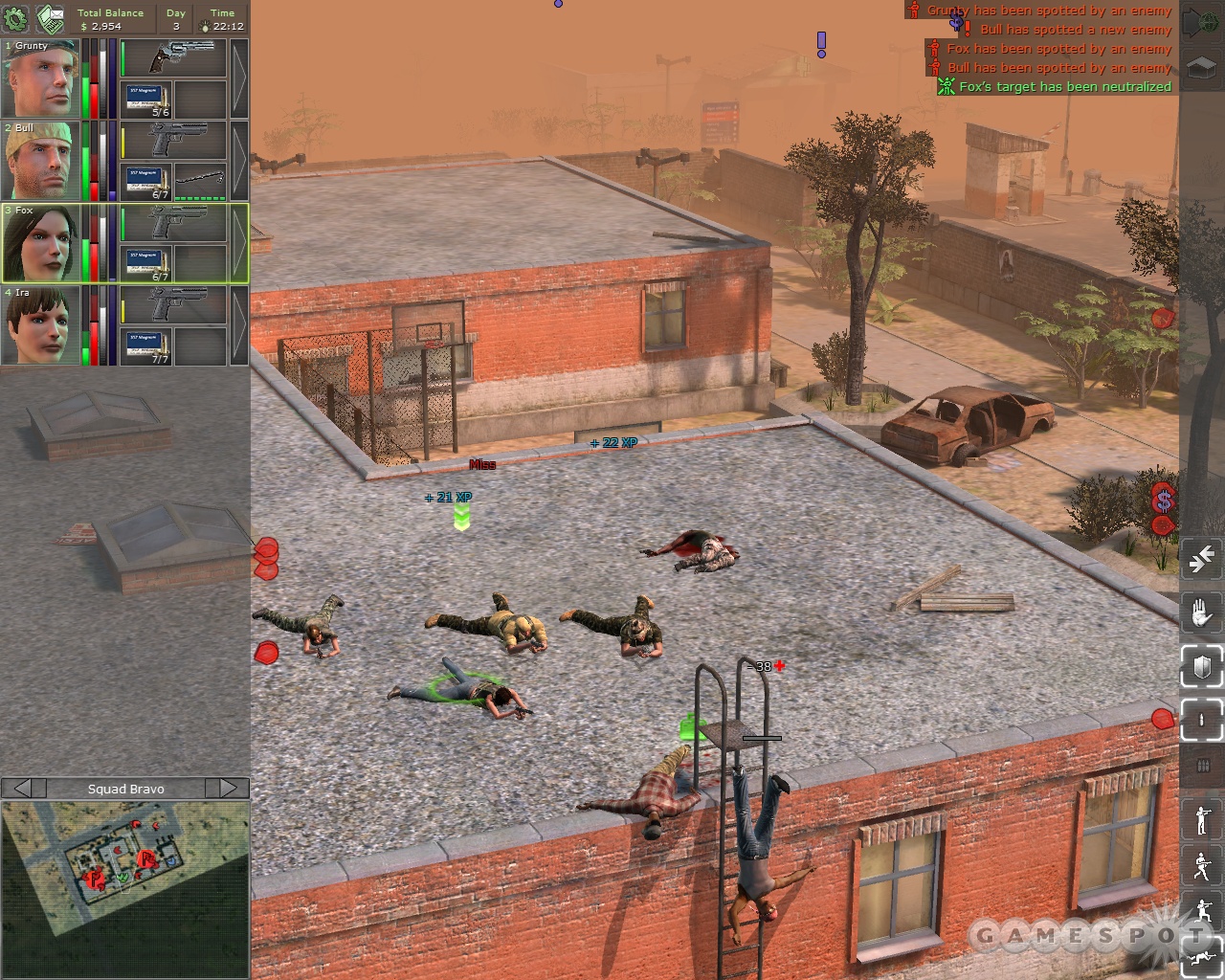Going back to improve on older games can sometimes muck up what worked rather than fix what was awry in the first place. That's partially the case with Jagged Alliance: Back in Action, a remake of the second game in the series that attempts to freshen up the old-school formula. It still looks and plays like a relic from the past, which may be a selling point for some, but the transition from turn-based strategy to quasi real-time combat is a bumpy one. Back in Action can be fun to play, despite the fact that it bogs you down in excessive micromanagement and bludgeons you with some mind-boggling design choices on the battlefield. It's a game that longtime PC purists will want to love, and you just might if you can tune out the frequent aggravations it throws at you.
The game follows the same story as Jagged Alliance 2; you're put in command of hiring a ragtag mercenary group to liberate the fictional country of Arulco from the dictatorial regime of the queen. You're initially armed with enough funds to hire just a few starting mercs from among 40 eccentric military-minded ruffians with different specialties, weapons skills, and distinct personalities. Once your group is formed, you work to reclaim territory from the queen one town at a time through cunning strategy and brute force. Expanding your influence earns you additional sources of income to use for purchasing arms and hiring more mercs to round out your fighting force.
It's a slow, tedious process early on that grows extremely challenging. Part of the difficulty comes from the abundant choices you have to make with very limited resources. You often have to choose whether you want to shell out for new members, pick up better gear for your current soldiers, or nab extra guns to pass off to the locals to help defend your turf from being taken back. While the original game let you heal troops and repair weapons from the map screen, Back in Action moves these tasks to the battlefield itself. Therefore, there's not much to do on the map besides move your grouped units in real time to navigate the terrain and engage key enemy positions. Most of the excitement occurs when you zoom in to specific combat encounters.
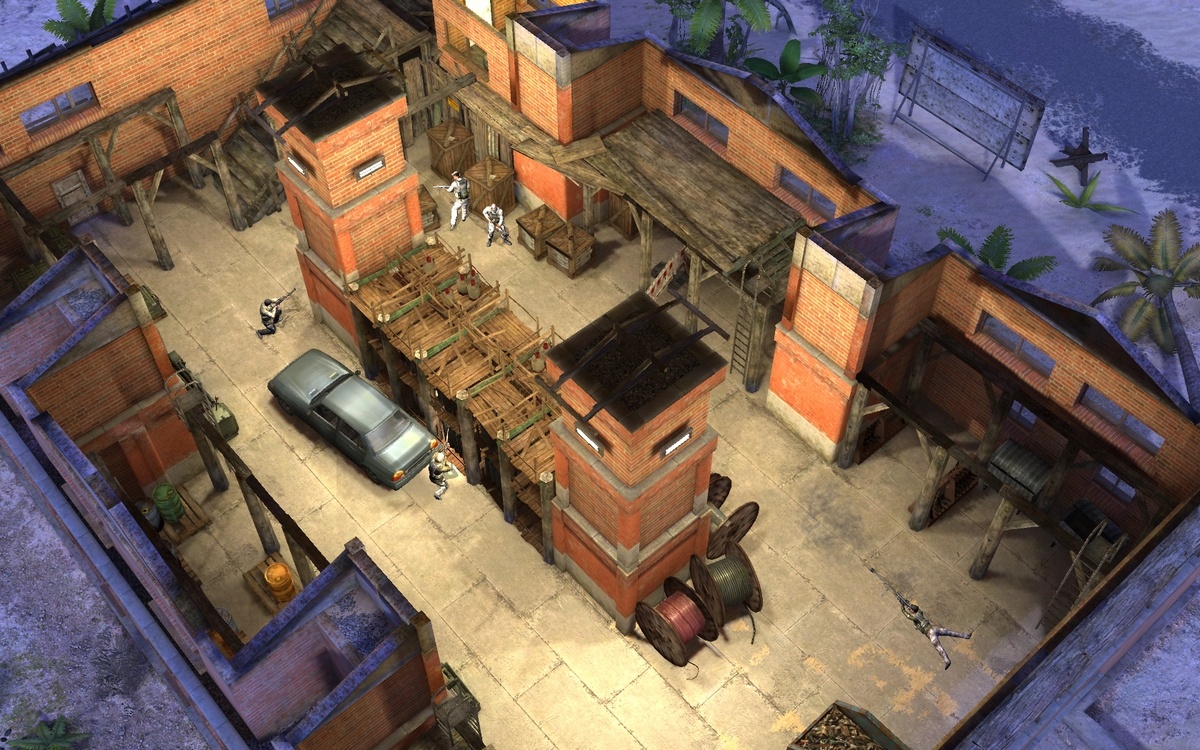
Instead of the deep turn-based tactical strategy of previous games, Back in Action takes a more fluid approach to combat that moves battles along at a quicker pace but presents some other issues. Selecting your whole group or moving mercs around independently, you direct their actions and select targets in real time. You handle other tasks like manual reloading, using health kits and special gear, swapping out weapons, and changing their stances for better aim right in the midst of the action. There's a lot of babysitting involved and the real-time format isn’t very conducive to juggling around these tasks effectively in a firefight, particularly when your mercs don’t always respond to your orders as quickly as they need to. It's easy for foes to get the jump on you, which quickly causes your best laid plans to spiral out of control.
Thankfully, you can pause the gameplay at anytime to consider your strategic options and issue individual sequences of commands to each squad member that play out in real time when you resume. This all works fairly well when you have a small group under your command, but it can get tedious to micromanage the simultaneous actions of multiple large squads. That doesn't even consider the fact that you have to keep a close eye on the durability of their armor, their ammo and weapons supply, and many other minute details.
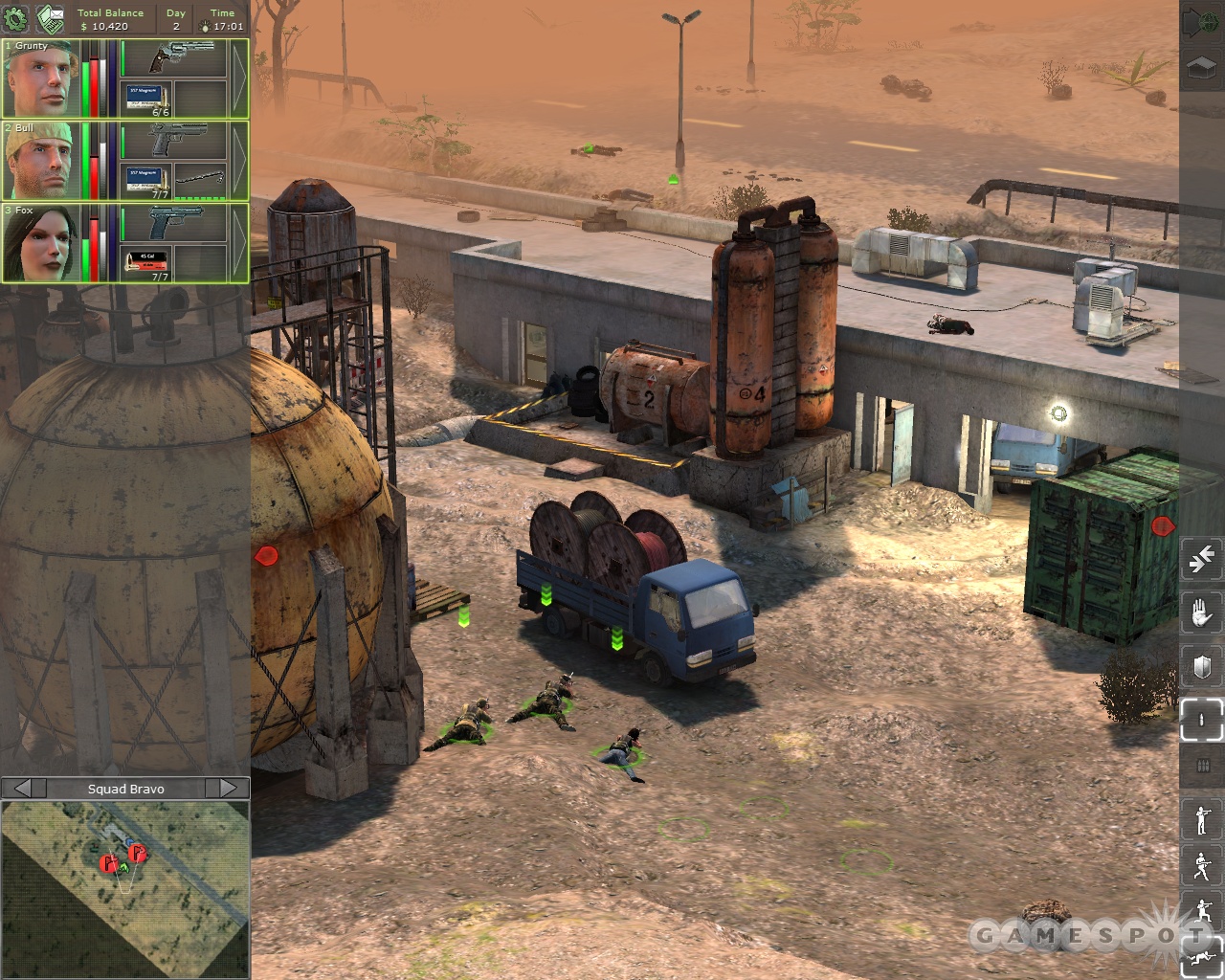
Gaining ground is a slow, patience-draining process early-on. Your force grows larger and earns better equipment, but the difficulty ramps up at an uncomfortably fast pace. Battling a dozen or so foes at a time in the first run of combat encounters forces you to use every possible resource you can scavenge to get by unscathed, but just when you hit a steady stride the game starts doubling and tripling the number of enemies it throws at you in each mission.
The sudden shift is jarring, and getting wiped out over and over again despite your best efforts stinks until you capture enough ground to make your force more formidable. But even then you have to worry about enemies sending squads to reclaim regions you’ve already slogged through in battle. If that happens, you’re stuck fighting some of the same battles over again even though you won the first time. It’s not a pleasant prospect when you just spent an hour or more clawing your way through a particularly tough encounter.
Clearing out all of the queen's troops from each expansive level requires using cover creatively and setting up meticulous ambushes to lure enemies into the line of fire. When you get into a steady groove, it's quite satisfying to take down targets and wrestle control of each area from the grasp of your adversaries. Still, there's a lot that can go wrong, and it frequently does. Back in Action's pause, plan, and go mechanic doesn't always yield the best results. Whereas recent strategy shooter Frozen Synapse really nailed a similar combat system by giving you the option to conduct trial runs to see if your plans have a chance at succeeding, Back in Action’s real-time element leaves things to fate and dim AI to decide.
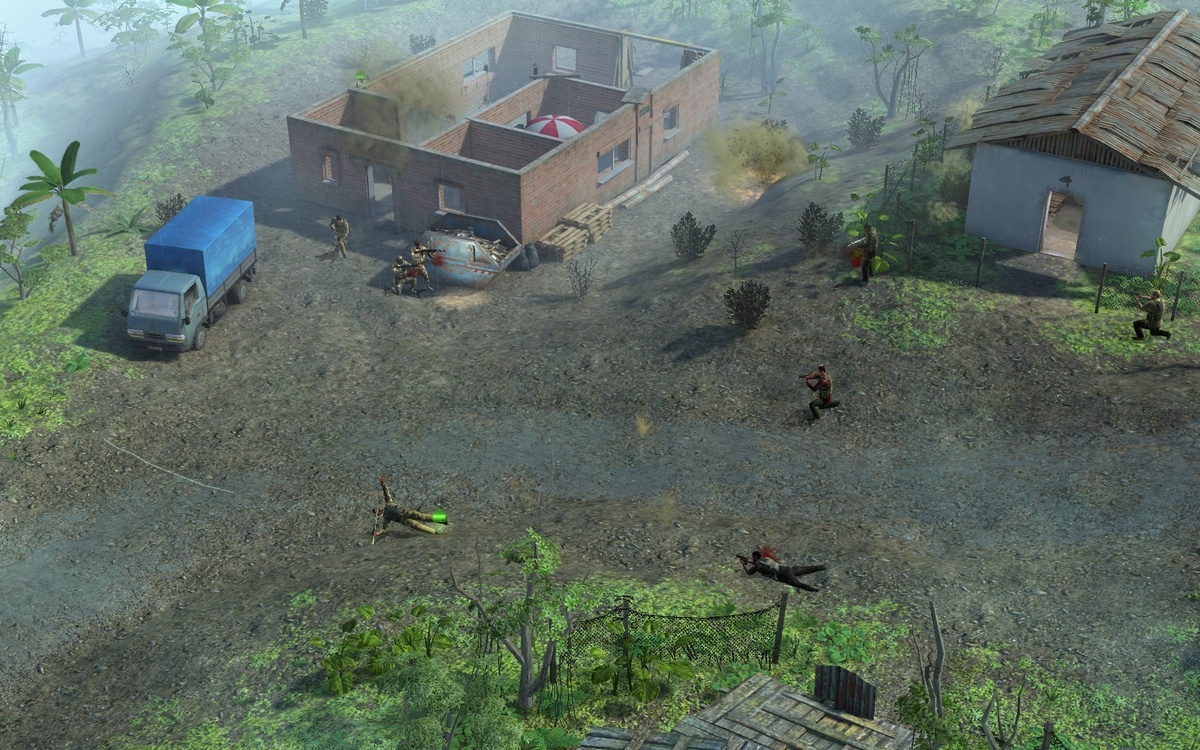
Committing to your plans without knowing how they might unfold gets dicey because there's a fine line between a flesh wound and a pile of mercenaries bleeding out on the ground. Even when they're well armed and armored, your mercs are painfully fragile. It doesn't take many hits from a decent-size weapon to take down one of your crew, and fallen comrades that aren't revived fast enough will die permanently. Losing favorite mercs you’ve grown attached to isn’t just emotionally draining, it’s absolutely disastrous in certain stretches of the campaign.
Losing a teammate in the early game when resources are scarce can be a big blow, but you also need a beefy force to handle later encounters that throw dozens of foes at you at once. The game autosaves separate files for the start of battle and individual combat skirmishes within an encounter, which is often the only thing that keeps you from rage quitting after repeatedly losing your whole squad, but the constant need to reload encounters the second they go awry is frustrating on its own. Back in Action is extremely tough, and it's sometimes hard to muster the patience to muscle through when you reach a strategic impasse.
Back in Action isn't a bad-looking game, but it has some rather bland stretches that balance its beautiful ones. The insides of structures are brimming with cool details that give the them plenty of personality and a lived-in feel. While the battlefields outside have some nice visual designs, many of the earlier maps feel sparse, drab, and empty.
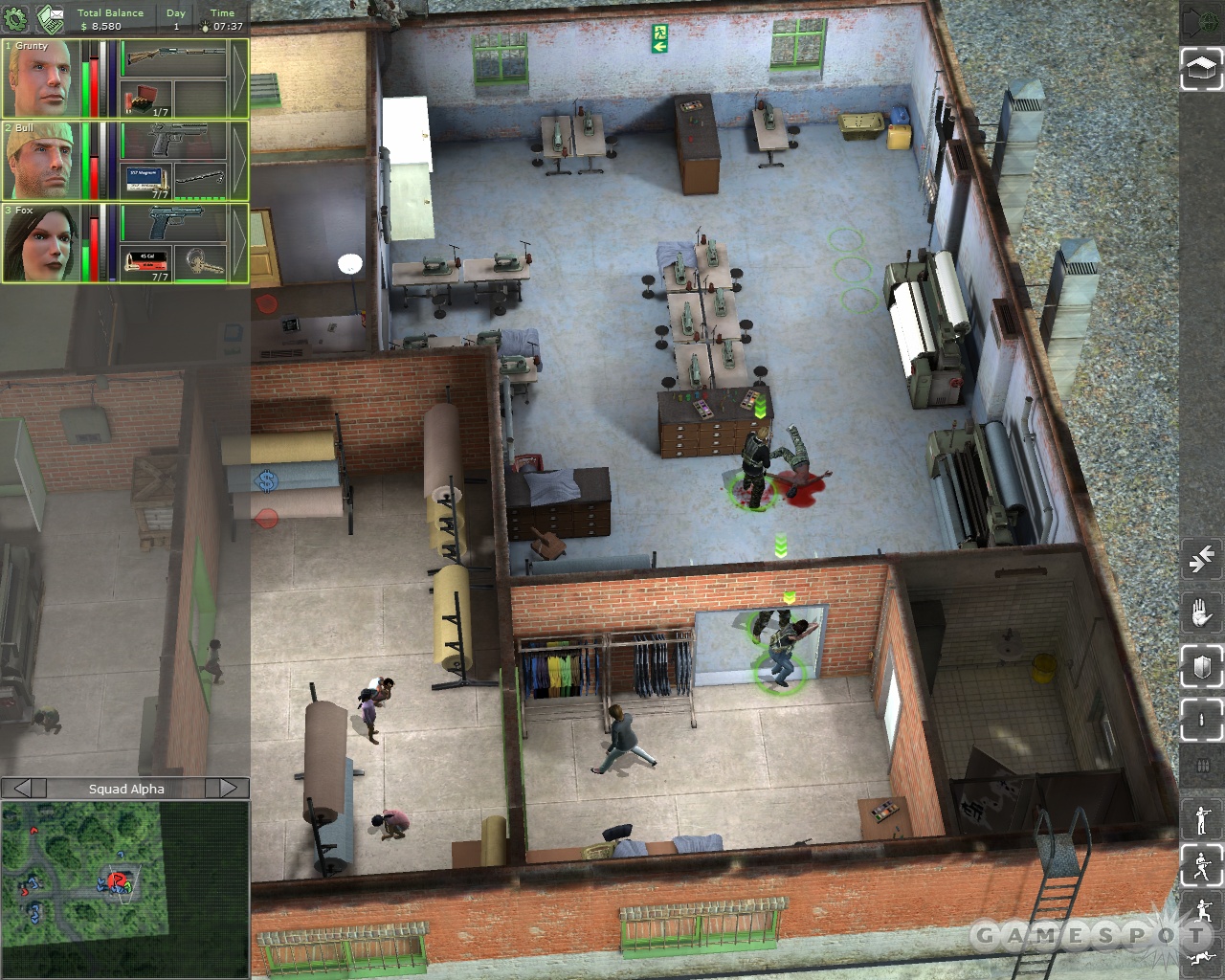
Wrestling with the camera also presents a problem through many encounters. It's tough to find the sweet spot to get a good viewing angle that lets you survey the land while issuing orders. When the ability to effectively strategize and plan out your attack relies so heavily on surveying the battlefield, horrible camera controls are a huge misstep. You're locked into a distant bird's-eye view or a sharp-angled close-up view, and neither feels quite comfortable. Battling on, around, and through buildings is hampered by line-of-sight issues, as well as visual glitches. For example, the roof sometimes disappears when you're on top of a structure; at other times, you can't get a view of what's inside unless you're barreling through the door--often right into a shotgun blast to the face.
Over time all of the niggling little problems build into a bigger headache, making this remake a disappointing, often irritating excursion at best. For every design decision that enhances gameplay there’s one that sets it back. A good stiff challenge is one thing, but so many aspects of Back in Action’s design actively work against you. That’s unfortunate, because there are stretches where the core game is really enjoyable--just not enough to keep all but the most diehard players from packing it in.
